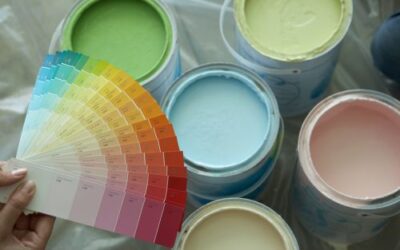The stain you see on the wall does not always have the same origin, and making a mistake when it comes to treating it can make the problem worse and make the repair more expensive. Below you will learn how to differentiate the three most frequent sources of damp and how to choose the right solution before painting or waterproofing.
Contact our professionals
Types of humidity you may encounter
Condensation dampness
This forms when indoor water vapour cools on cold surfaces (windows, corners of poorly insulated rooms). You will notice constant misting on windows, dark mould on bathroom joints and warped paint on the top of walls.
Dampness from seepage
Water from rain or other external sources seeps in through cracks in the façade, roofs or poorly sealed joints. Irregular stains appear and grow on rainy days, and saltpetre flakes off the paint around windows or ceilings.
Moisture from rising damp
Water from the ground slowly rises through the pores of the wall, typical in dwellings without a damp-proof barrier. You will see a horizontal ridge between 30 and 80 cm from the ground, dusty flaking and a cold sensation when resting your hand on the lower part of the wall.
Diagnosing the origin step by step
Observe the shape and height of the stain.
-
Rounded, raised stains are usually condensation.
-
Stains arising from a crack point to seepage.
-
Continuous line from the baseboard is a sign of capillary action.
Carry out the plastic test
Stick clear plastic over the area and seal the edges for 48 hours:
-
Drops on inner face → vapour inside → condensation.
-
Drops on the outer face → water penetrates the wall → seepage or capillarity.
Measure ventilation and relative humidity
If the hygrometer reads more than 60 % and there is hardly any ventilation, condensation is the main cause.
Why dampness should be tackled as soon as possible
The WHO reminds us that prolonged exposure to mould and damp environments increases the risk of asthma and respiratory diseases (WHO Guidelines for Indoor Air Quality: Dampness and Mould). In addition, plaster disintegrates, paint falls off and the wall loses its insulating capacity, increasing your heating or air-conditioning consumption.
Professional solutions according to the type of humidity
Condensation
-
Increase natural ventilation or install mechanical ventilation.
-
Insulate the coldest thermal bridges.
- Apply anti-condensation and anti-mould paints that allow vapour to escape without fungus appearing.
Filtration
-
Seal cracks with elastic mastics.
-
Waterproof façades or roofs with resins and asphalt fabrics.
- Protect the finish with a waterproof façade coating resistant to rain and solar radiation.
Capillarity
-
Inject resins that create a chemical damp-proof barrier.
-
Replace deteriorated plasters with macroporous mortars that allow moisture to evaporate.
- Finish with breathable mineral paints applied by our team of house painters to prevent future buckling.
When to ask for professional help
-
Stains reappear soon after cleaning.
-
Plaster crumbles and saltpetre covers skirting boards.
-
There are doubts between two types of dampness or several appear at the same time.
In these situations a technical diagnosis is advisable. At Bartolomé Bas Pinturas we evaluate the home, locate the exact cause and propose the construction, waterproofing and painting treatment that will give your walls a healthy and lasting appearance. Contact us and forget about damp!
Other publications that may interest you
Waterproofing paint: what it is and when to apply it outdoors
Leaks don't usually give you any warning. One day you discover a dark spot behind the wardrobe or a corner of the ceiling with buckled paintwork and you realise that damp has been working quietly for some time. In climates with heavy rainfall or in homes close to the...
Most resistant paint types for facades in coastal areas
The façades overlooking the sea are under constant tension. While holidaymakers enjoy the breeze and the sound of the waves, saltpetre is deposited on walls and railings, humidity penetrates through every micro-fissure and the sun, generous in hours and intensity,...
Colours that increase the feeling of space in small houses
You don't need to tear down partitions or do a complete renovation to make your house look bigger. In many cases, paint can completely transform the perception of space. Choosing the right colours not only brings harmony and light, but also creates the illusion of...




